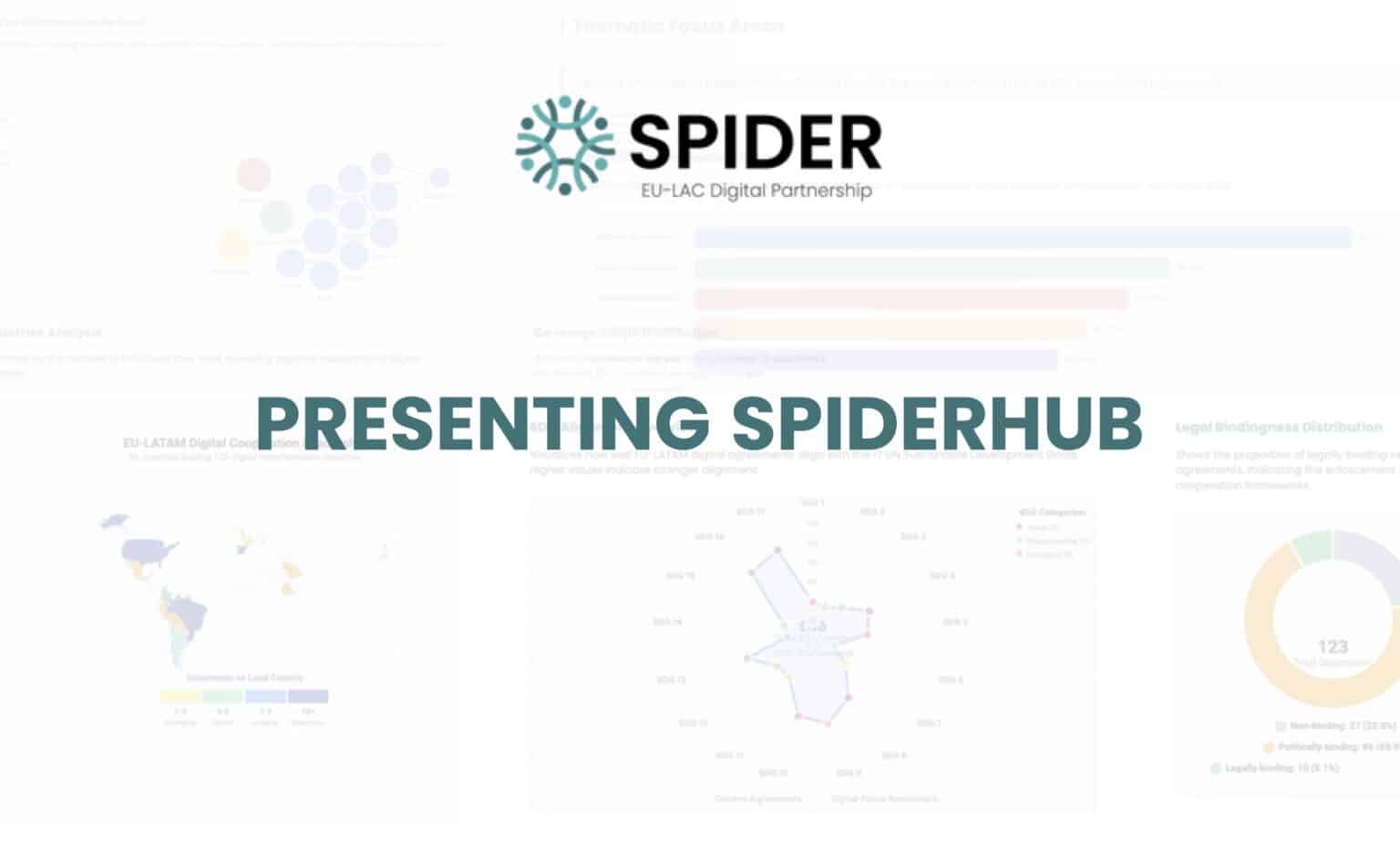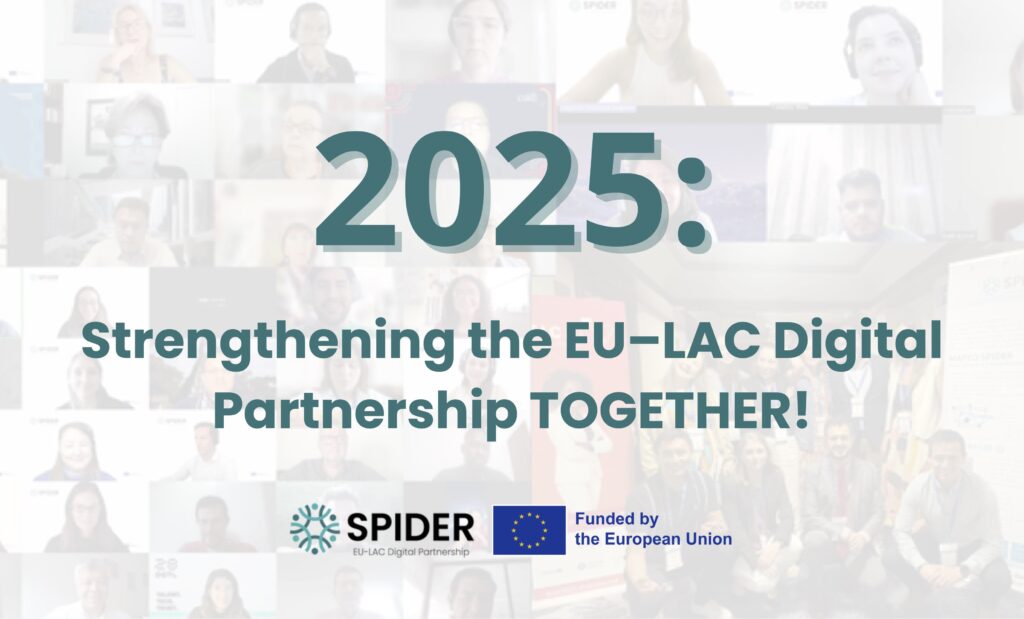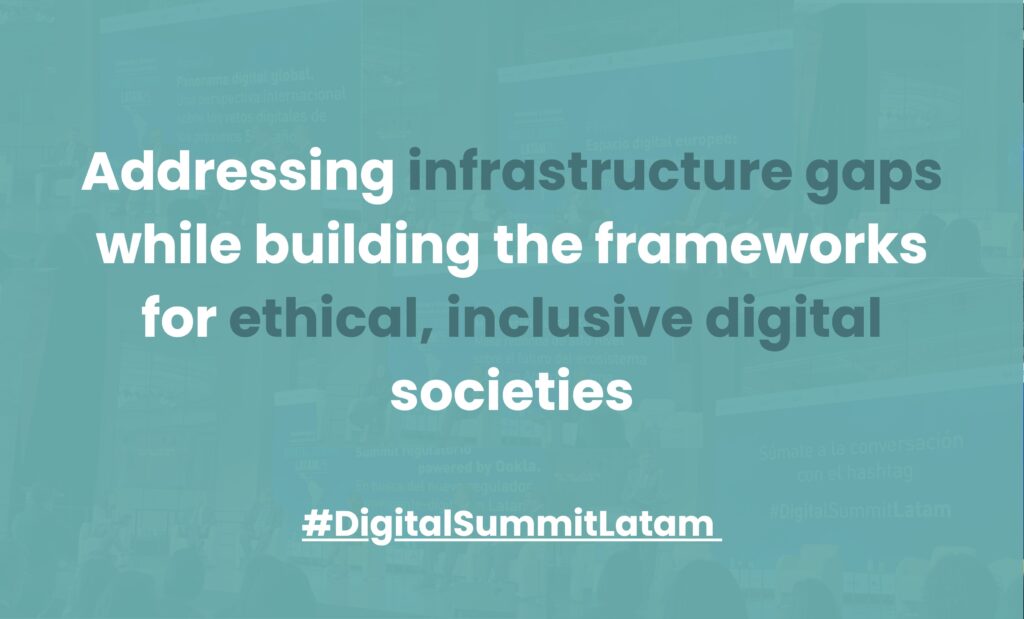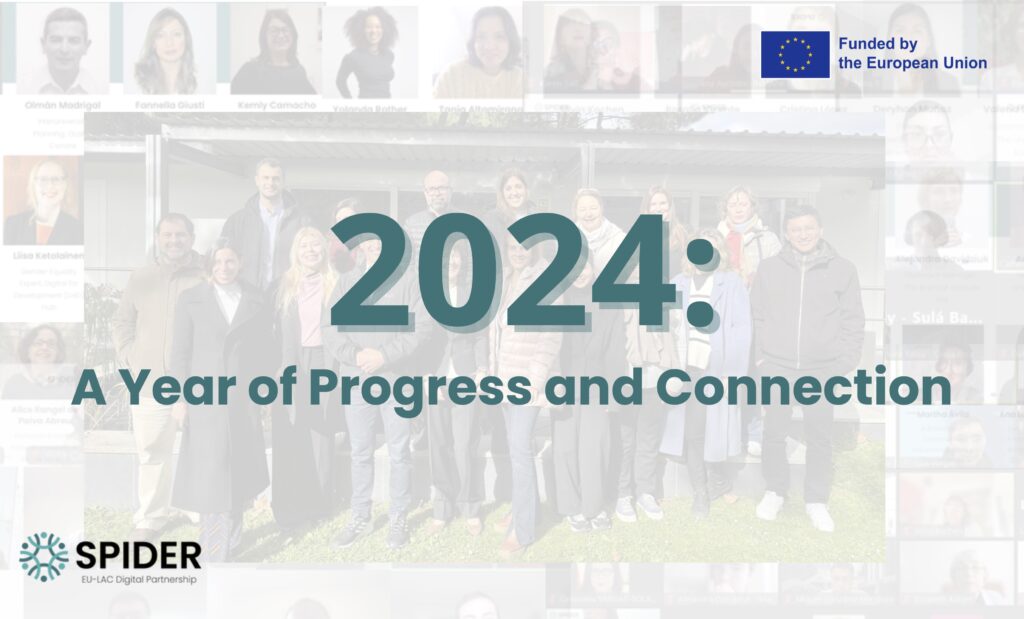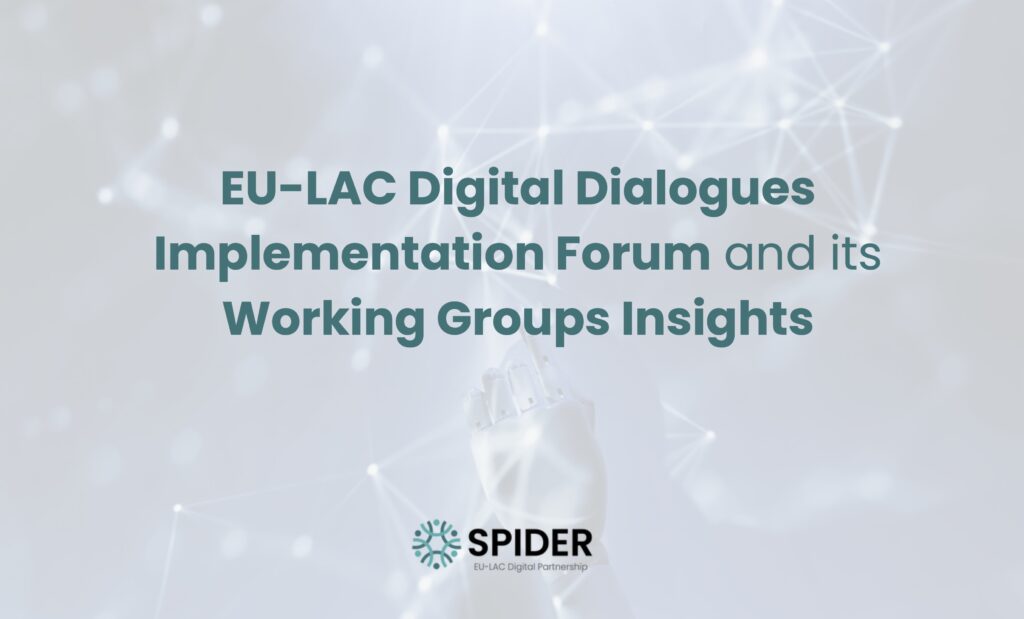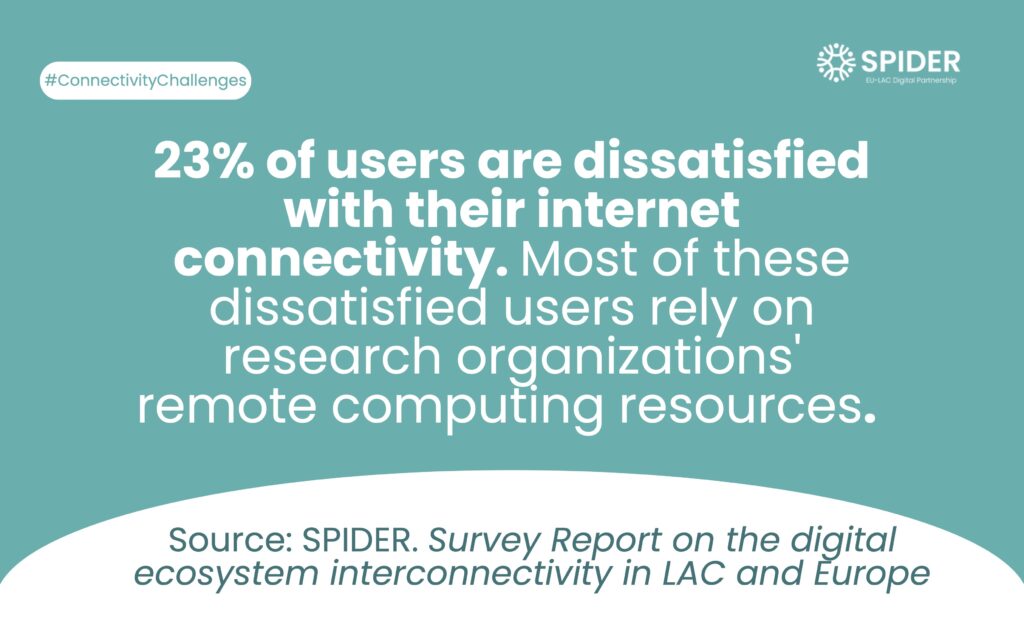SPIDER has conducted extensive mapping of digital dialogues between Europe and Latin America and the Caribbean. These dialogues are fundamental to SPIDER’s mission because they represent the foundation for R&I cooperation between EU-LAC.
As a result of this comprehensive mapping work, SPIDER is excited to introduce SPIDERHUB – an AI-powered platform that transforms our research findings into an accessible tool for understanding and navigating EU-LAC digital cooperation.
From Dialogue Mapping to Interactive Platform
Digital dialogues are central to SPIDER’s objectives because they establish the framework for enhancing EU-LAC cooperation on R&I and maximizing the potential of the BELLA network. Through systematic mapping, SPIDER documented how these high-level commitments can translate into practical implementation.
SPIDERHUB emerges from this mapping work, transforming static research into a dynamic platform that makes complex policy information accessible and actionable for stakeholders across both regions.
Key features:
- 96 digital dialogues mapped and analysed
- 62 agreements tracked with AI-powered insights
- Interactive visualisations showing policy connections
- Real-time exploration of cooperation patterns
Why Digital Dialogues Matter for SPIDER
Digital dialogues establish cooperation frameworks, identify opportunities for collaboration, and create pathways for R&I partnerships. Understanding their interconnections is essential for bridging the gap between high-level commitments and practical implementation.
SPIDERHUB addresses these challenges by providing a comprehensive platform that helps stakeholders better understand and navigate EU-LAC digital cooperation.
What is SPIDERHUB?
SPIDERHUB is an AI-powered platform that analyses, connects, and visualises digital transformation agreements between Europe and Latin America and the Caribbean. Through artificial intelligence technologies, it creates an interconnected network of information that allows researchers, policymakers, and the general public to understand the relationships shaping digital cooperation.
Main objectives:
- Centralise relevant documentation on digital transformation between the EU and Latin America and the Caribbean
- Automatically analyse commitments and policies using AI
- Visualise connections between actors, themes, and commitments
- Facilitate informed decision-making based on concrete data
How SPIDERHUB Works
1. Document Collection
The platform gathers official documents, agreements, policies, and strategies related to digital transformation from governmental sources, international organisations, and relevant private entities.
2. AI Processing
The artificial intelligence system analyses documents, identifying actors, commitments, key themes, and relationships between different policies, extracting structured metadata.
3. Validation and Enrichment
Experts review and validate the results of the automatic analysis, ensuring accuracy and reliability in the data. Additional contexts are added when necessary.
4. Connection Visualisation
The platform creates visualisations and relationships between documents, allowing users to explore the network of policies and commitments that connect the EU and Latin America and the Caribbean.
How to Navigate SPIDERHUB
Begin with the Overview section to understand the scope of EU-LAC digital cooperation, then explore Dialogue Categories to dive into specific policy areas and agreement types.
Interactive Features: Hover over data points for detailed information about specific dialogues and agreements. Click on elements to access full documentation, implementation status, and related commitments.
Data Exploration: Use geographic filters to focus on specific countries or regions. Apply thematic filters to explore cooperation patterns in areas like AI, cybersecurity, or digital infrastructure.
Analysis Tips: Compare agreement timelines with implementation progress to identify successful cooperation models. Cross-reference dialogue outcomes with actual R&I projects to assess impact and identify opportunities for future collaboration.
Built on SPIDER’s Research Foundation
SPIDERHUB directly extends SPIDER’s mapping work, which documented 96 digital dialogues and 62 agreements across EU-LAC cooperation. By building on SPIDER’s methodology and adding advanced AI capabilities, SPIDERHUB makes this research more accessible and actionable for supporting the implementation of dialogue commitments.
This platform represents how SPIDER’s research translates into practical tools for policy analysis and cooperation tracking, supporting evidence-based decision-making in EU-LAC digital transformation.
Ready to Explore?
EU-LAC digital cooperation involves complex, interconnected initiatives with significant opportunities. SPIDERHUB helps stakeholders navigate this landscape with greater clarity and insight, supporting SPIDER’s mission to bridge digital dialogue gaps.
Questions about SPIDERHUB? Contact us at info@spidernetwork.org
SPIDERHUB builds on SPIDER’s mapping research to enhance data accessibility and support the implementation of EU-LAC digital dialogue commitments.

